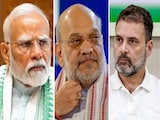Social media has turned travel into a performance, and somewhere along the way, we might have lost the plot. From temple selfies to "viral" cafes in the middle of rice fields, the way we explore the world has changed. Travel used to be about slowing down, observing, and absorbing. Now, it's a race to the most photogenic spot - ideally one with Wi-Fi and a hashtag. Here's a look at how social media is quietly (and not-so-quietly) reshaping everything from rituals to our breakfast orders.
Also Read: This Arctic Town Has The World's Northernmost Brewery And A Ban On Death
Here's How Social Media Is Reshaping How We Perceive Travel:
1. Traditions And Rituals Are Reimagined For Reels
Photo: Pexels
In Bali, centuries-old temple dances now often run twice an evening to accommodate tourist groups with phones held high. Locals quietly joke that ceremonies feel more like theatre now. UNESCO has even warned that cultural heritage is being "polished for engagement," losing depth while gaining visibility. It is not just Bali. In Varanasi, priests conducting Ganga aartis have had to request tourists to stop filming mid-chant. What was once sacred has become spectacle - and often with a filter slapped on.
2. When 'Instagram-Worthy' Goes Too Far
Photo: Unsplash
Remember the viral Austrian town Hallstatt? It doubled its tourist footfall after being dubbed the "most Instagrammable town in Asia." Fences had to be installed to keep photo-happy crowds from blocking the views - ironically, the very views they were trying to photograph. Italy's Roccaraso faced a similar fate when a TikTok influencer's video brought thousands of visitors overnight, overwhelming locals and clogging mountain roads. Even the mayor called it an "assault."
3. The Rise Of Airbnb Rentals
Photo: Pexels
In Himachal Pradesh, short-stay rentals have skyrocketed, pushing up rents and reshaping sleepy hill towns into weekend party hubs. Kasol's local cafes are now all smoothie bowls and pasta plates. In Ladakh, the Atal Tunnel gave social media a direct route to a region that once took days to reach - and the sudden boom has locals scrambling to manage garbage, water shortages and rising food costs. As one Ladakhi hotel owner quipped, "We have three kinds of tourists now - bikers, bloggers and bottle-leavers."
4. The Transition From Storytelling To Scripting
Photo: Unsplash
Tour guides from Bali to Banaras say they now field requests like, 'Where can I get a sunset photo without people?' or 'Which temple is best for reels?' The art of slow, patient storytelling is often lost when tourists arrive with a checklist of shots they have already seen online. Some local performers even rehearse 'spontaneity,' because audiences now expect the dramatic moments to hit on cue. Travel is increasingly being designed to look good, not necessarily to feel good.
What Locals Are Saying
Many Gen Z locals are beginning to feel what they call "tourist fatigue." Their childhood streets are now tripod zones. Grandparents say festivals feel more choreographed, less heartfelt. Even restaurant owners in tourist-heavy towns admit they have dropped traditional dishes for what looks better on camera. And while no one is asking travellers to stop posting, more and more communities are asking them to pause - and look beyond the screen.
Also Read: UNESCO Adds 26 New Sites To World Heritage List, Maratha Military Landscapes of India Included
Where Do We Go From Here?
It is not about deleting Instagram. It is about using it differently. Support places because they are meaningful, not just trending. Sit through an aarti without filming it. Ask about the recipe before posting your thali. In short: travel how you want to remember it, not just how you want it to look. After all, the best stories are often the ones that never make it to the grid.






